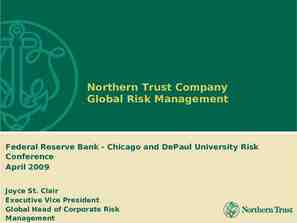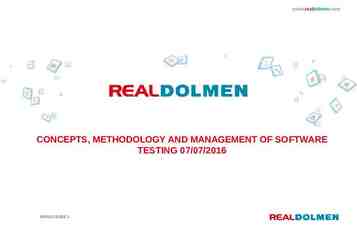PRINCIPLES OF FLIGHT CHAPTER 4
56 Slides6.15 MB

PRINCIPLES OF FLIGHT CHAPTER 4

THE OBJECTIVE To understand how the various aerodynamic forces act on an airplane and to know how to control those forces for safe flight

WHERE TO START? Gather up your resource texts, the PTS and the FAA reference books and AC’s In this case the PHAK, with a few sprinkles from Aerodynamics for Naval Aviators, Kershner, and Dole The best place to start is with definitions From the PTS: 1. Airfoil design characteristics 2. Airplane stability and controllability 3. Turning tendency (torque effect) 4. Load factors in airplane design 5. Wingtip vortices and precautions to be taken

Terms And Definitions Airfoil Leading edge Trailing edge Camber Chord line Mean camber line Relative wind Angle of attack (alpha) Angle of incidence

THE 4 FORCES Lift Weight Thrust Drag The relationship of the forces Take each and explain in the appropriate detail for the level of the student

Lift Since a primary piece of lift generation revolves around air density, you’ll need to cover this, include Standard atmosphere: Temp. 15 C, 59 F Pressure 2116psf, 14.7psi, 29.92Hg, 1013.2mb Density .002377 slugs per cubic foot (the most important of the 3) Density altitude is an important concept to cover here; include Effects of pressure Effects of temperature Effects of humidity Effects of elevation If previously not covered hit: Indicated, pressure, density, true and absolute altitudes Indicated, calibrated, equivalent, and true airspeeds

LIFT 3 ways lift is created 1. Deflection - Newton's 3rd law 2. Downwash – Newton’s 3rd law 3. Bernoulli's principle Positive pressure below Negative pressure above There are 3 concepts to lift generation Conservation of momentum Conservation of energy Conservation of mass Newton’s laws explain the conservation of momentum Bernoulli’s equation explains the conservation of energy Every action has an opposite and equal reaction Static pressure Dynamic pressure Total pressure Euler equations explain the conservation of mass This is where it gets messy

LIFT 2 C L V S L 295 1. Airstream velocity V (knots) 2. Air density ratio (sigma) 3. Airfoil planform area square feet 4. Profile shape of the airfoil 5. Viscosity of the air 6. Compressibility effects 7. Angle of attack (degrees)

WEIGHT Weight acts vertically through the center of gravity (define CG) Weight also acts in component vectors along climbs and descents

THRUST Thrust moves the aircraft forward In order to do this is must produce a force greater than drag Thrust is what offsets the component of weight in a climb A increase in thrust will increase V and cause a lower alpha Since the opposite is also true, coordination between alpha and thrust must occur to maintain level flight

DRAG Drag is the force that resists movement through the air There are 2 types: Induced Parasite (FLIPS) Form leakage Interference Profile Skin friction L/Dmax

WINGTIP VORTICES Theory How are they generated (pressure differential) Induced drag connection Peak Tangential speed at 300 fps Heavy clean slow Vortex Behavior and Avoidance Levels off 800 to 1000 feet below Sink at a rate of several hundred feet minute No wind vortex moves outward at 2 to 3 kts A light crosswind 1 to 5 kts causes upwind vortex to stay on the runway Turbulence and higher wind can cause early break up

Ground Effect Ground effect is the reduction of induced drag experienced when flying 1 wing span or less above the ground There The is an alteration of upwash, downwash and wingtip vortices ground reduces the vertical component of airflow (downwash) There is a reduction of wingtip vortices due to a reduction of spanwise flow This in turn reduces induced drag At 1 wing span drag is reduced 1.4% At ¼ span drag is reduced 23.5% At 1/10 span drag is reduced 47.6% This Wing is why we use ½ span in our pre-takeoff brief span on the F-33A is 33’6”

Ground effect Pitching moments develop upward for the aircraft leaving ground effect and may cause an increase in angle of attack such that the corresponding increase in drag may cause the aircraft to settle. The pitch up and down moments are experienced entering and leaving ground effect Level flight in ground effect results in a significant pitch up requiring a substantial force on the yoke to keep the nose down There is also a change in the effective angle of attack. Because of the altered downwash, an angle of attack decrease for the same CL is the result Pitching moments develop downward for an aircraft entering ground effect because of the wings downwash not being able to help the tail generate lift downward.

Ground Effect Summary On entering ground effect: Induced drag is decreased Nose-down pitching moments occur Airspeed may indicate slow On leaving ground effect Induced drag is increased Nose-up pitching moments occur Airspeed may indicate higher Manufacture’s design CG range is determined to a large extent based on the pitch moments developed entering and leaving ground effect

Axes of Control Longitudinal axis runs nose to tail Vertical axis runs through the roof and belly usually through the cabin area Rudder controls yaw about the vertical axis Lateral axis runs wingtip to wingtip Ailerons control bank about the longitudinal axis Elevator controls pitch about the lateral axis Understanding of the axes is critical to our next topic – stability

Stability Stability is generally discussed with reference to the 3 axis Longitudinal stability which is pitch stability Lateral stability which is roll stability Vertical stability which is yaw stability Stability is further categorized Positively stable – resists any displacement Negatively stable – favors displacement Neutrally stable – neither resistant or favoring displacement

Aircraft Design Characteristics Engineers design in specific control characteristics based on the job the aircraft needs to do Training aircraft generally are quick to respond to inputs Transport category aircraft are usually slower to respond and are heavier on the controls Stability affects 2 areas significantly: Maneuverability Controllability

Maneuverability & Controllability Controllability: The capability of the aircraft to respond to the pilot’s inputs Especially with regard to flightpath and attitude Maneuverability: The quality of an aircraft that permits it to be maneuvered easily Also the ability to withstand the stresses imposed by those maneuvers It is governed by weight, inertia, size and location of flight controls, structural strength, and powerplant

Stability The flightpaths and attitudes an aircraft flies are limited by The aerodynamic characteristics Thrust Structural limitations If the maximum utility is desired, it has to be able to be safely controllable to its limits without exceeding the pilot’s strength There are two types of stability Static Dynamic

Static Stability Is the initial tendency of an aircraft to move, once it has been displaced from its equilibrium position This type of stability has three subtypes: Positive static stability is indicated by initial movement back to the original position Neutral static stability is indicated by initial movement to stay in the new position Negative static stability is indicated by initial movement away from the original position

Dynamic stability Dynamic stability refers to the aircraft response over time when disturbed from a given AOA, slip, or bank. This type of stability also has three subtypes: Positive dynamic stability—over time, the motion of the displaced object decreases in amplitude and, because it is positive, the object displaced returns toward the equilibrium state. Neutral dynamic stability—once displaced, the displaced object neither decreases nor increases in amplitude. A worn automobile shock absorber exhibits this tendency. Negative dynamic stability—over time, the motion of the displaced object increases and becomes more divergent.

Dynamic Stability The oscillations made during the progression are called periodic motion Amplitude is the measurement of the movement of each oscillatory period Aperiodic motion is non-timed motion The airplane may have positive static stability but that does not mean it has positive dynamic stability in every circumstance Outside forces may act in such a way as to increase the amplitude

Static and Dynamic stability If the airplane has positive static stability normally an oscillation will exist However, if acted on by an outside force, the dynamic stability may be neutral or even negative The oscillations may stay the same or become greater This may happen to the point of structural failure If the airplane has neutral or negative static stability no oscillation will exist The movement may be to a new direction or diverge from the original direction at a faster and faster rate

Stability types We can categorize stability along the 3 axis: Longitudinal or pitch stability Lateral or roll stability Pitching occurs about the lateral axis Rolling occurs about the longitudinal axis Vertical or yaw stability Yawing occurs about the vertical axis

Longitudinal Stability Longitudinal stability is the quality that makes a plane stable about it’s lateral axis A plane without this may pitch into a dive or climb and into a stall Static longitudinal stability is dependent on 3 major factors: Location of the wing with respect to the cg Location of the tail with respect to the cg Area or size of the tail surface

Longitudinal Stability The center of pressure moves aft with a decrease in alpha The center of pressure moves forward with an increase in alpha This means that a pitch up moment causes a unstable condition because lift is increasing and moving forward at the same time This causes the alpha to further increase In order to counter this problem, the cg must be forward of the center of lift

Longitudinal Stability Longitudinal stability is dependent upon 3 factors: Location of the center of lift to the CG Location of the tail to the CG Area of the tail To make this condition stable, tail down force is needed There are two forces in play here: α is set to a negative value on the tail Downwash from the main wing The faster the plane flies the more tail down force from downwash (except for T tails) On elevators the manufacturer sets the tail down force to optimum for cruise speed and power settings On stabilators, camber of the airfoil and trim is used to achieve the same result On average a stabilator only needs to deflect about half the amount of an elevator

Longitudinal Stability As the speed decreases the dynamic pressure is decreased on the tail allowing the nose to pitch down In addition the downwash is also reduced causing a lesser downward force on the tail This places the plane in a nose low pitch allowing speed to increase This in turn causes the nose to pitch up but not as far this time (in positively dynamically stable aircraft) This oscillation continues until it levels out A power change has the same effect

Longitudinal stability Power is considered to have a destabilizing effect on stability Generally addition of power causes the pitch to increase This all depends on the thrust line built into the aircraft design, however Below the cg, addition of power will give a pitch up Through the cg, addition of power will give no pitch change (other than downwash on the tail discussed earlier) Above the cg, addition of power will cause a pitch down

Longitudinal stability Loading effects on longitudinal stability With an aft cg, over-rotation may become a real problem Higher cruise speed Lower stall speed Less stable With a forward cg, the plane may be so stable as to resist any rotation until a very high airspeed is reached Lower cruise speed Higher stall speed More stable

Lateral Stability and Control Lateral stability is the stability displayed about the longitudinal axis of the airplane or specifically the stability in the roll. There are 4 main design factors that make a plane laterally stable: Dihedral Sweepback Keel effect Weight distribution

Lateral Stability The different thing about Lateral stability is that there is really no force in a roll that will cause the airplane to right itself There is really no aerodynamic force created in rolling that tends to restore the wings to level flight In addition there is no force that will continue the roll once it has begun Most airplanes are neutrally stable in the roll Overbanking tendency in a turn

Dihedral or Anhedral Dihedral is a stabilizing design, whereas Anhedral is a destabilizing design. The stabilizing effect of dihedral occurs when a sideslip is set up as the result of turbulence or gust displacing the plane.

Dihedral The side slip results in the downward wing having a greater angle of attack than the upward wing. The extra lift then rights the airplane. The most common way to produce lateral stability is to use dihedral Manufactures build in a 1 to 3 degree angle

Dihedral Dihedral involves a balance of lift created by each wing If a gust causes roll, the aircraft will sideslip in the direction of the bank Since the wings have dihedral the air strikes the lower wing at a much greater α This causes more lift to be generated on the lowered wing making it rise Once level the lift is equal again

Dihedral How Does It Work? As you can see in this exaggerated diagram, the sideslip that sets up causes an increase in α There is a change in the relative wind due to the slip The lowered wing has a higher α due to the relative wind changing from directly 90 degrees to an angle off the wing tip In addition the lowered wing has a greater vertical lift component The raised wing has a greater horizontal lift component This causes the imbalance in lift between the two wings sideslip

Dihedral If we look at the force vectors for a wing with dihedral we see that some of the lift the wing generates is tilted into the horizontal This horizontal vector requires more lift from the wing than if it had no dihedral This concept however is slight, the main reason dihedral works is due to the sideslip and increase in α There are some penalties that go along with too much dihedral: Less vertical component of lift More drag (higher α to make up for loss of lift) More aileron force to roll

Wing position Pendulum effect: A high wing sets up a pendulum type of situation This can result in the equivalent of a 1 to 3 degree dihedral. So not as much dihedral is needed. In some planes, negative dihedral is needed. The low wing however the reverse is true. Still other airplanes have both dihedral and anhedral Keel effect: A greater portion of the keel is above and behind the cg When a slip occurs airflow pressure against the upper portion of the keel rolls the wings back to level

Wing Sweepback When a side slip is set up in a sweepback wing, the upwind side wing will have a greater angle of attack because of the more favorable relative wind The leading edge of the forward moving wing has a more favorable perpendicular angle to the relative wind This caused more lift and thus more drag Bringing the nose back to the original position

Yaw stability Directional stability is mostly influenced by the vertical structures In order for positive stability to result, more surface area must be behind the cg than ahead When displaced the aircraft is still moving in the same direction with the longitudinal axis offset This results in a momentary skid which is corrected by more force on the side of the plane in the direction of the skid This force causes the plane to return, however a new heading will emerge So a yaw force will always require a course correction from the pilot

Yaw stability Sweepback may be employed to enhance yaw stability Wing drag increases on the forward moving wing which results in the nose yawing back to the original position Dutch roll may be encountered when quickly depressing the rudder pedal and releasing As the plane yaws, more lift is produced on the forward moving wing which causes roll and drag As the drag pulls that wing back the other wing now moves forward creating more lift and again roll This may continue until structural failure results

Directional Stability The degree of directional stability is proportional to the size of the vertical stabilizer and the distance from the CG Increase either or both and an increase in directional stability will result

Directional-Lateral Coupling Dutch roll is an example of directional – lateral coupling The nose of the aircraft makes a figure 8 as the aircraft simultaneously rolls and yaws This occurs most often in swept back wing planforms where there is a dissymmetry of lift usually caused by a gust One of the more common examples of this is Adverse Yaw Because the yaw is produced in the opposite direction of the turn it is referred to as adverse When rolling into a turn, the upward wing's lift vector is tilted aft because of the change in the relative wind components being up and parallel to the flight path

Adverse Yaw The downward wing's lift vector is tilted forward because of the change in relative wind components being down and parallel to the flight path. These two forces oppose the turn entry and cause adverse yaw. Aileron drag is another cause of adverse yaw. Frise ailerons and differential aileron travel are common ways of offsetting the effects of aileron drag. Using spoilers to turn solves this problem. common

Spiral Instability This happens when there is strong directional stability and weak roll stability A gust causes a yaw which causes one wing to rise The resulting slip keeps the yaw going and weak dihedral does not counter The outside wing moves farther on the arc and experiences an increase in speed and an increase in lift This furthers the roll and a nose down pitch is experienced resulting in a descending spiral Back pressure just tightens the turn and increases the rate of descent This happens a lot in partial panel instrument students All aircraft have this to varying degrees

Forces In A Turn Vertical component of lift controlled by pitch Horizontal component of lift controlled by bank Centrifugal force Weight Resultant load and total lift

Forces in the Turn

Forces In A Turn Turns increases load factor or g’s Higher stall speed with increase in load factor Load factor squares as the stall speed doubles LF x 57 new stall speed 2gs 60 degrees bank stalls at 80.6 knots

Rate and Radius of Turn

Unexpected Stall Let’s take a closer look at this stall/bank angle thing for the Bonanza No flaps stall speed of 64 Upwind to crosswind turn bank angle of 40 Climbing 47 at Vx 77 knots is roughly equal to 1.466gs (1/cosΦ) 1.466x64 77 knots Poof! You Stall spin die should run this equation on every plane you fly so you know what the envelope looks like

Load Factor Vs Bank Angle

Other Turning Considerations Adverse Over yaw banking tendency

The Prop For a prop plane the greatest thrust is full power, not moving Referred to as static condition or static rpm As airspeed is increased, thrust decreases Alpha on the prop decreases as forward speed increases This is due to the change in relative wind

The Prop Since the prop is a rotating airfoil, it is subject to all the same conditions as wing Geometric pitch is the distance covered if the prop moved through a medium like jello with no slippage Effective pitch is the actual distance the prop covers in the air, accounts for slippage We will cover more about props during systems

The 4 left turning forces Torque Slipstream Rotational velocity imparted by the prop forces the tail right Gyroscopic Precession Action of the engine/prop turning clockwise causes a counterclockwise turn or left bank Force is felt 90 in the direction of rotation P-Factor Thrust on the downward blade is more than on the upward blade






